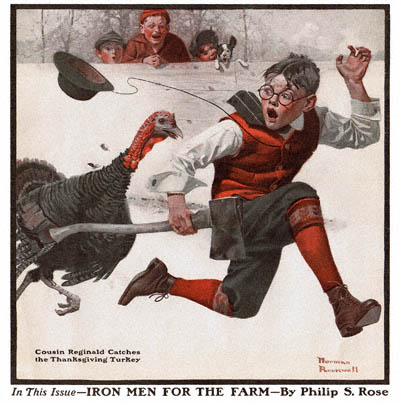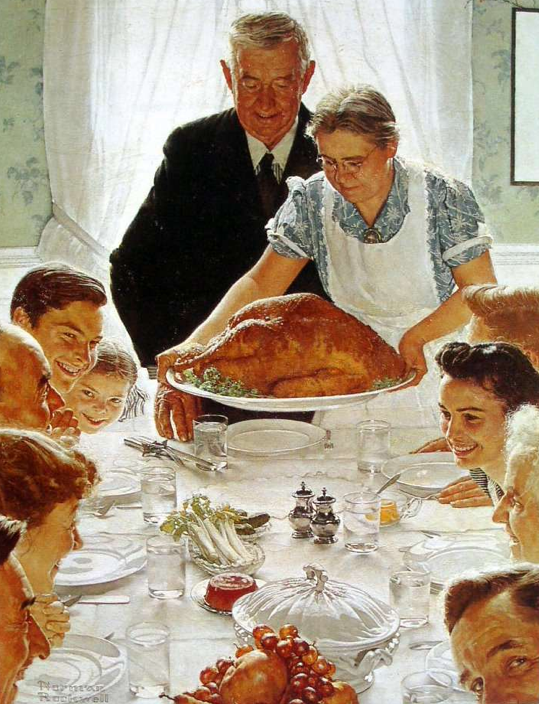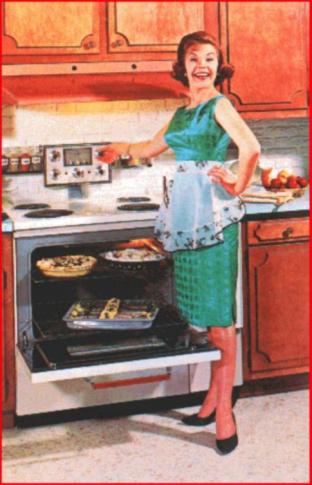As promised, here is our second helping, from Trudy Schuett, of Yuma, AZ.
Gordon and the Big, Mean, Turkey
by Trudy Schuett
Does your family always have a turkey for Thanksgiving, or do you have a pre-holiday discussion, turkey vs. ham like we do?
I grew up in a family with a ham tradition. Every holiday, my mother would trot out a five or ten-pound (depending on the number of people) canned Rath ham. My husband’s family always had turkey, even on Easter.
We never had turkey or chicken, even on regular days. That’s because my parents and grandparents, with my aunt and uncle had a poultry farm in the Depression era, and so for many years, that was what there was to eat. “Chicken and green beans,” my dad used to say. “If you didn’t want that, you could have green beans and chicken.”
They did experiment with turkeys for a while at the Purlingbrook Poultry Farm. Turkeys however, are a different bag of feathers. While you’ve probably heard the story that they’re so stupid they can drown in the rain by looking up to see what’s coming out of the sky, they’re big critters when they still have all their parts, and territorial. They can be big trouble, especially when you’ve got an inquisitive toddler loose in the yard.
Turkeys aren’t like chickens, which pretty much eat and make a mess, and not much else. They’re not big enough to cause any serious trouble.
One summer afternoon, my grandmother looked up from her work in the house and realized little Gordon had wandered off again. He’s my second-eldest brother. Grandma kept an eye on the kids while my mother was either out back in the garden or tending the chickens. At that time, there were only the two boys, Larry and Gordon. After a brief survey of the house, Grandma went outside in search of the missing little boy, when she heard shrieks coming from the turkey pen.
She ran to investigate, and there was Gordon, in his diaper, cowering against a corner of the fence. Two or three turkeys, as tall or even taller, were approaching him, beaks at the ready, to dispatch this intruder. Grandma called to my aunt who happened by, and leapt into the fray, to save the terrified kid from a certain assault. Auntie Teen soon followed, to run interference. Despite some pecking and plenty of un-Grandma-like language, the two women managed to save my brother, who was retrieved unharmed.
It wasn’t long after that, the dinner menu changed to turkey for a while, and the Purlingbrook Poultry Farm returned to dedicated chicken-and-egg production. In later years, when I was old enough to start asking questions, like why we always had ham, my mother would say it was because Dad preferred ham, and Dad would mutter something about “big, mean birds.” Eventually I did get the whole story, and I could figure out why Dad wouldn’t want one of those things on his table.
Gordon, however, gleefully digs in to his roast turkey on Thanksgiving, as his wife comes from a turkey family, and he probably feels a bit of sweet revenge in any case.
- We hope everyone had a nice, warm, belly-filling Thanksgiving dinner−whether you prefer ham or turkey−and that many stories and laughs were shared around the table.
Don't forget about our contest! (see previous post,
or click here.)
The winner will receive a $25 Amazon gift card - hey, one less present to buy, right? So keep those stories coming!
Thanks for reading, and Happy Thanksgiving!
Heidi and Eileen






























